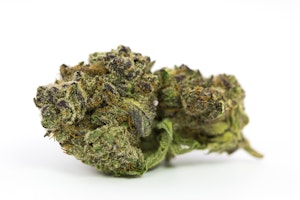
Photo by AGUSTÍN FARÍAS
Many turn to cannabis for its pain-relieving qualities.
Nevertheless, some users find themselves facing an ironic dilemma: headaches following cannabis use.
What causes cannabis-induced headaches, and how can you find relief?
It all begins with identifying the type of headache you are experiencing.
Does THC Cause Headaches?
The relationship between THC and headaches is not straightforward. Medical and academic research offers limited evidence that THC directly causes headaches.
In fact, the narrative might lean more towards THC’s potential benefits in this area.
A 2021 review highlights how medical cannabis has been found to reduce both the duration and frequency of migraines in adults who experience these or similar conditions.
Despite these findings, there’s a paradox. Some users report headaches following cannabis use. Given that THC, cannabis’s primary psychoactive ingredient, can dilate blood vessels and influence serotonin levels, it might trigger headaches or exacerbate migraines in certain individuals.
So, what kinds of headaches do cannabis users report?
Types Of Cannabis Headaches

Photo by Elsa Olofsson
Headaches after using cannabis can manifest in various forms:
Tension
Characterized by a persistent, dull ache around the forehead or back of the head, tension headaches are the most common.
These may arise from the strain of cannabis used or the method of consumption.
Dehydration or irritation from smoking or vaping can also be contributing factors, tightening muscles around the neck and scalp, leading to this uncomfortable sensation.
Withdrawal
For regular cannabis users, cutting back or taking a break might lead to withdrawal headaches.
These headaches occur as part of the body’s response to a sudden decrease in THC, the psychoactive component of cannabis. Headaches due to withdrawal are usually worse during the first week of quitting cannabis.
Symptoms can also include irritability and difficulty sleeping, compounding the discomfort.
Sinus
Sinus headaches happen when the sinus passages behind your nose, eyes, cheeks, and forehead get swollen. Smoking cannabis can irritate these passages and lead to inflammation, causing pressure-like pain in these areas.
This headache is usually paired with other sinus symptoms like a runny nose or facial tenderness.
Cluster
Although less common, some individuals report experiencing cluster headaches after using cannabis.
These are sharp, very painful headaches on one side of the head, often accompanied by watering eyes and nasal congestion.
The relationship between cannabis use and cluster headaches isn’t fully understood.
Cannabis Headache Prevention

Photo by Etienne Boulanger
While immediate remedies are helpful, preventing cannabis-induced headaches from occurring in the first place is the best strategy.
Here are some proactive measures you can take:
Choose Strains Wisely
Not all cannabis strains are created equal when it comes to their potential to cause headaches. Indica strains are generally associated with relaxation and might be less likely to lead to headaches than Sativa strains, which can be more energizing. Pay attention to how different strains affect you and choose accordingly.
Monitor Dosage
Overconsumption is a common reason behind cannabis-induced headaches. Finding the right balance that works for your body can prevent headaches. Start with lower THC concentrations and doses, especially if you’re trying a new strain or method of consumption, and gradually increase as needed. Opting for strains higher in CBD can help offset headaches potentially caused by THC.
Avoid Mixing Cannabis And Alcohol
Mixing cannabis with alcohol can heighten the likelihood of developing a headache, among other adverse effects. If you’re prone to headaches after using cannabis, it’s wise to avoid alcohol to see if there’s an improvement in how you feel.
Limit Environmental Triggers
For some, environmental factors like bright lights or loud noises can trigger headaches after cannabis use. If you’re sensitive, try to use cannabis in a calm, comfortable setting where you can control these environmental factors.
Be Mindful Of Consumption Methods
Smoking and vaping, especially at high temperatures, can irritate the throat and sinuses, leading to headaches. Alternatives like edibles or tinctures may be less harmful and have the same effectiveness.
Home Remedies For Immediate Relief

Photo by Joanna Kosinska
There are several cannabis headache remedies you can try for quick relief. These methods are effective for dealing with discomfort and can help you feel better without needing a doctor’s visit:
Stay Hydrated
Dehydration is a frequent culprit behind headaches linked to cannabis use. To combat this, drink plenty of water before, during, and after your session.
Apply A Cold Compress
For immediate relief, an ice pack applied to your head and temples can work wonders. The cold helps constrict blood vessels and reduce inflammation, easing the pain. Wrap the ice pack in a cloth to prevent ice burns and apply it for 15-20 minutes for the best effect.
Cold Shower
For a more immersive approach, a cold shower can act as a full-body cold compress, constricting blood vessels and reducing pain. To avoid the initial shock of the cold, start with room-temperature water and gradually adjust to cooler temperatures.
Herbal Tea
Certain herbal teas, like ginger, peppermint, or chamomile, can relieve headaches. Ginger tea, for instance, has properties that may reduce inflammation and nausea, while peppermint tea can relax muscles and ease pain. Chamomile tea is beneficial for relaxation and stress relief, addressing some common triggers of headaches.
Use Over-The-Counter Pain Relievers
Over-the-counter pain medications like acetaminophen or ibuprofen can be effective when natural remedies don’t cut it.
So, while some cannabis users might find relief from using, others might encounter headaches as an unwelcome side effect.
Understanding your own body’s response to THC and adopting preventive strategies can help you enjoy the benefits of cannabis without the headache.
Herb Recommended Products:
READ MORE










